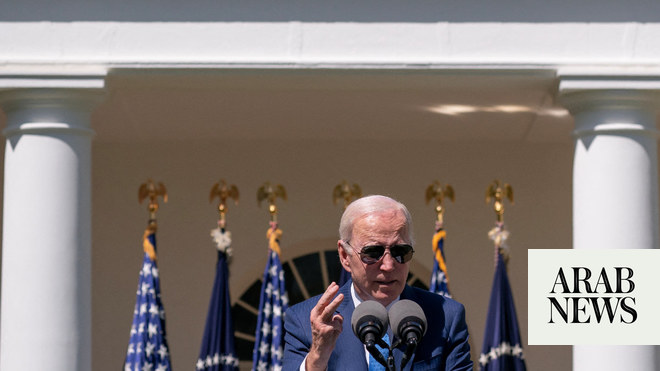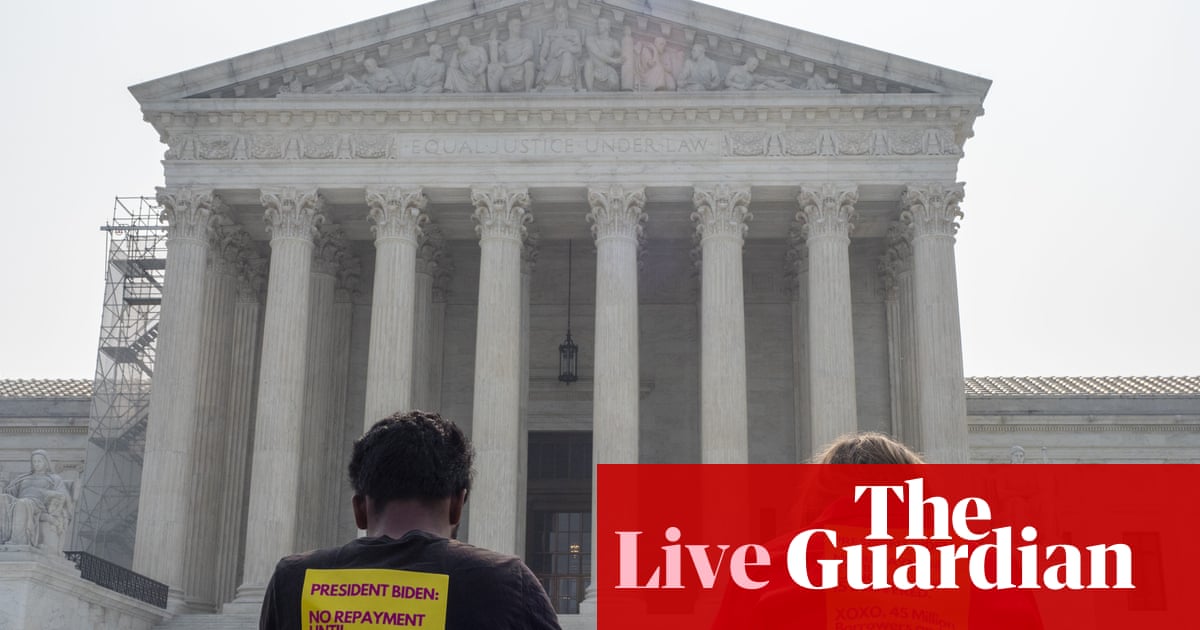
Millions of Americans received welcome news on Wednesday when Joe Biden delivered on a campaign promise to provide $10,000 in student debt forgiveness.
Borrowers who earn less than $125,000 a year will be eligible for loan forgiveness, with those whose low incomes qualified them for federal Pell Grants receiving up to $20,000 in relief. About a third of US undergraduate students receive Pell Grants.
Biden also extended a pause on federal student loan payments through the end of the year. The White House said it would be the last pause, and borrowers should expect to resume payments in January.
If it survives probable legal challenges, Biden’s plan could offer a windfall to many Americans in the run-up to midterm elections in November. More than 45 million owe a combined $1.7tn in federal student debt. Almost a third owe less than $10,000, according to federal data.
Biden also proposed a new income-driven repayment plan that would cap loans for low-income future borrowers and introduce fixes to the loan forgiveness program for non-profit and government workers.
“Twelve years of universal education is not enough,” Biden said, announcing the plan at the White House. “How do we remain the most competitive nation in the world with the strongest economy in the world with the greatest opportunities?
“That’s what today’s announcement is about. It’s about opportunity. It’s about giving people a fair shot. It’s about the one word America can be defined by: ‘possibilities’. It’s about providing possibilities.
Biden noted that the federal government gave loans to small businesses during the Covid pandemic.
“Now, it’s time to address the burden of student debt the same way.”
Biden added that “an entire generation is now saddled with unsustainable debt.
“The burden is so heavy that even if you graduate, you may not have access to the middle-class life that the college degree once provided. The burden is especially heavy on Black and Hispanic borrowers who, on average, have less family wealth to pay for it.”
Biden said more information on the plan would soon be released and borrowers who qualify for forgiveness could expect a “short and simple form to apply for this relief”, sent by the Department of Education.
The US has a long history of student debt, the vast majority owed to the federal government, which has been offering loans for college since 1958. US student debt has more than tripled over the last 16 years.
Senior Democrats on Capitol Hill cheered Biden’s announcement. The Senate majority leader, Chuck Schumer, and the Massachusetts senator Elizabeth Warren, a longtime advocate of the policy, issued a joint statement.
They said: “With the flick of a pen, President Biden has taken a giant step forward in addressing the student debt crisis by cancelling significant amounts of student debt for millions of borrowers.
“The positive impacts of this move will be felt by families across the country, particularly in minority communities, and is the single most effective action that the president can take on his own to help working families and the economy.”
The senators added that Democrats would continue with efforts “to help close the racial wealth gap for borrowers and keep our economy growing”.
Biden has faced pressure from liberals to provide broader relief. The cancellation falls short of the $50,000 many activist groups wanted. Some groups have called for full student debt cancellation.
“If we can cancel $10k, we can cancel it all,” the Debt Collective, a union of debtors, tweeted on Wednesday.
Administration officials claimed the plan could reduce inflation. The top Senate Republican, Mitch McConnell, argued that it would worsen the problem.
McConnell said: “Biden’s student loan socialism is a slap in the face to every family who sacrificed to save for college, every graduate who paid their debt, and every American who chose a certain career path or volunteered to serve in our armed forces in order to avoid taking on debt. This policy is astonishingly unfair.”
Biden’s continuation of the pandemic loan payment freeze came just days before millions were set to find out when their next student loan bills were due. The end of the payment freeze extension was set for 31 August.
During the 2020 presidential campaign, Biden was initially skeptical of student debt cancellation as he faced progressive candidates including Warren and Bernie Sanders, the democratic socialist senator from Vermont.
On Wednesday, Sanders hailed “a great step forward” but said: “We have got to do more.”
As he tried to shore up support among younger voters, Biden unveiled a proposal for debt cancellation of $10,000 per borrower, with no mention of an income cap. That campaign promise was narrowed in recent months by embracing the income limit.
Democrats pushed the administration to go as broad as possible, seeing debt relief as a galvanizing issue, particularly for Black and young voters.
‘There’s been a dramatic shift in how Americans think about the role of government in helping people out for college,” said Brian Powell, professor of sociology at Indiana University Bloomington who co-authored a book on the student loan crisis.
Powell noted that support for debt cancellation and college affordability has grown. Those who go to college make on average $30,000 more a year than those with just a high school degree.











